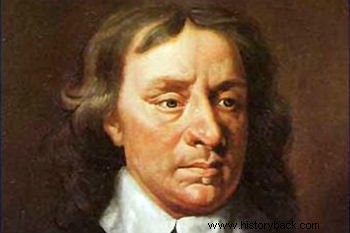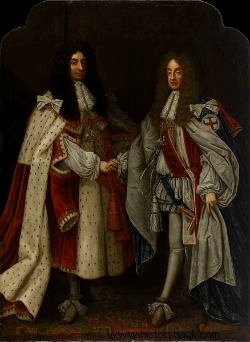The English Revolution was a set of civil wars and political regime changes that took place in England, Scotland and Ireland between 1640 and 1688.
These revolutions marked the rise of the bourgeoisie and consolidated the parliamentary monarchy in England.
Abstract
The English Revolution can be divided intofour phases main:
- The Puritan Revolution and theCivil War , from 1640 to 1649;
- TheRepublic of Oliver Cromwell , from 1649 to 1658;
- The Restoration of the Stuart Dynasty , with Kings Charles II and James II, from 1660 to 1688;
- The Glorious Revolution , which ended the reign of James II and instituted the Parliamentary Monarchy.
As two revolutions - Puritan and Glorious - took place in a short space of time, this phase is also called "English Revolutions", in the plural.
These were aimed at:limiting the power of the king through Parliament, guaranteeing religious freedom for Anglicans, and preventing the restoration of Catholicism in England.
Puritan Revolution and Civil War
During the reign of Charles I there was a fierce power struggle between the King and Parliament.
The monarch thought that the king alone should direct the nation, dispensing with the help of parliamentary chambers. Due to this quarrel, King Charles I dissolved Parliament three times in 4 years of reign.
However, he had a desire to unify the churches of Scotland and England by imposing on the Scots the Book of Common Prayer (Book of Common Prayer). The Church of Scotland, however, rebels against this order and the king decides to go to war against the opponents.
For that, he needed money, and to get it, he wanted to raise taxes. This, however, should be approved by Parliament. A dispute then ensued over who should be allowed to raise taxes. Should it be the king, who ruled according to Divine Right? Or the Parliament that represented the sectors of the nation?
After many threats, the monarch and Parliament organize armies that face each other in civil war and culminate in the defeat of King Charles I.
During the Civil War, several political groups emerged in Parliament such as the "Levellers" (levellers) that brought together from small landowners to people who defended the end of private property.
The "levellers" are opposed by the conservative owners of large land properties. Later they would be called "diggers" and would advocate the end of private property.
Parliament wins the conflict and Charles I is arrested and sentenced to death. This sentence made room for the first and only English republican experience.
Although he was the first English king to be beheaded by his countrymen, Charles I tried to modernize the country. He built roads, filled swamps, created a postal service, and instituted a job-search help service.
He was also a patron of the arts and architecture trying to make London a great capital and bringing painters like Peter Rubens to decorate his palaces.
See also :Puritan Revolution
Oliver Cromwell's Republic

Oliver Cromwell, ruled England from 1853 to 1858
After the execution of King Charles I, Oliver Cromwell, a former member of Parliament, takes over the British government and establishes the Commonwealth . One of Cromwell's first acts directly benefited the bourgeoisie that supported him.
In 1650, he enacted the Navigation Acts, which required English goods to be transported only by English-flagged ships. This exempted ships of other nationalities and fostered the domestic naval industry.
However, Cromwell himself felt threatened by Parliament and closed it in 1653. He also ordered the arrest and execution of the leaders of the army he himself had ordered to form. He even manages to put his son, Richard, in front of the government.
Without the same prestige as his father, Richard Cromwell is unable to govern and the bourgeoisie itself asks for the return of the monarchy. In 1660, his son ascends the throne as Charles II and restores the Stuart dynasty in England.
Stuart Dynasty Restoration

Brothers Charles and Jaime have restored the Stuart family to the English throne
With the Restoration of the Stuarts, England's religious and political problems do not end.
King Charles II was openly in favor of a policy of religious tolerance, but the Protestant-dominated Parliament was against it. Likewise, the sovereign signs laws that favor the Anglican Church over other currents of Protestantism and the Catholic Church.
The dispute between Parliament and the King deepened when Charles II's brother James was discovered to be Catholic.
This gave rise to two political strands that exist to this day in British politics:
- Whigs :wished to exclude James from the line of succession to the throne;
- Tory: did not want to exclude James from the line of succession to the throne.
Naturally, King Charles II sided with the Tories unleashing a persecution of the Whigs. As he had no children with his wife and Jaime would succeed him, the nieces had to be raised as Protestants.
Glorious Revolution (1688)
The Glorious Revolution was a revolution without blood or strife that ended a period of revolutions in England started by the Puritan Revolution.
To understand it, we need to remember that religion and politics were closely linked at this time. The individual's belief determined his political position and that is why it was so important to define what would be the religion of the sovereign and, thus, of the whole kingdom.
Therefore, the bourgeoisie only welcomed the strengthening of the Protestant religion, as it defended the limitation of the monarch's power through Parliament.
In this way, the Catholic James II was always viewed with suspicion. Parliament conspires to have the throne handed over to his nephew William of Orange who had married his daughter and heir Princess Marie.
With no support in England, James II flees to France. In turn, William and Mary are received as kings in England. Next, the parliamentary monarchy is instituted, which considerably limits the sovereign's power in government.
We have more texts on this subject :
- Protestant Reformation
- Bourgeois Revolutions
